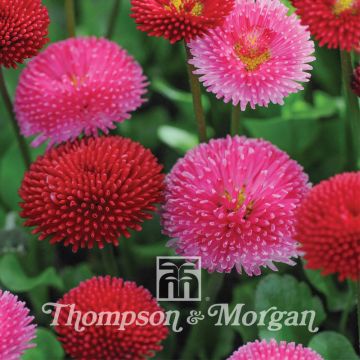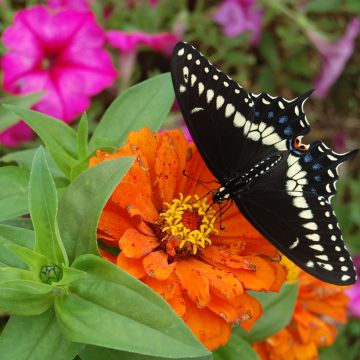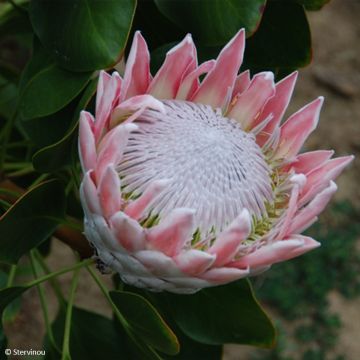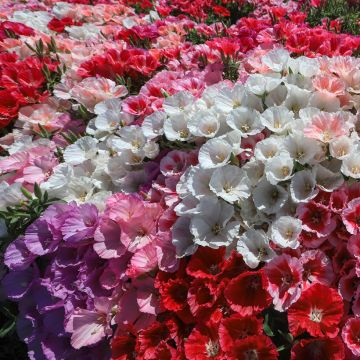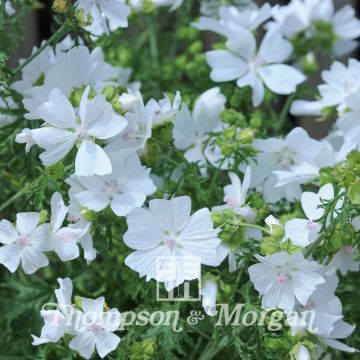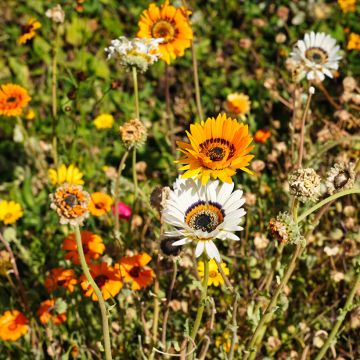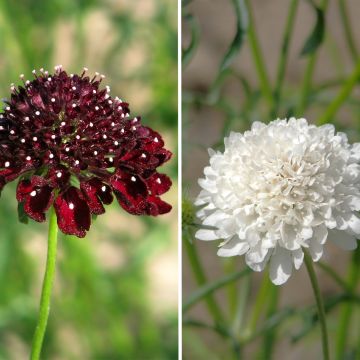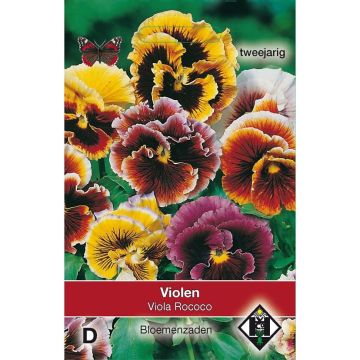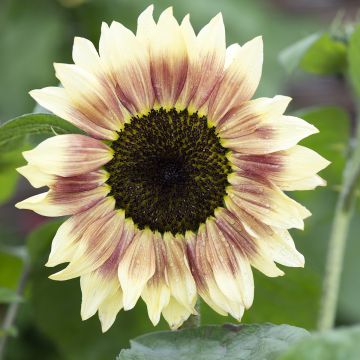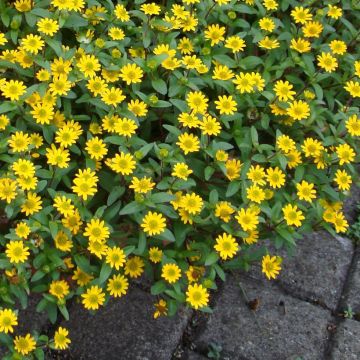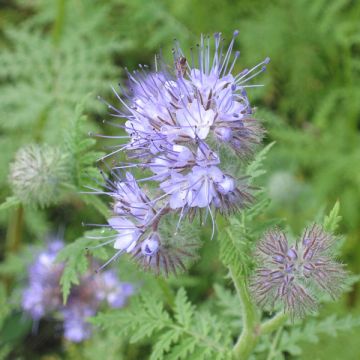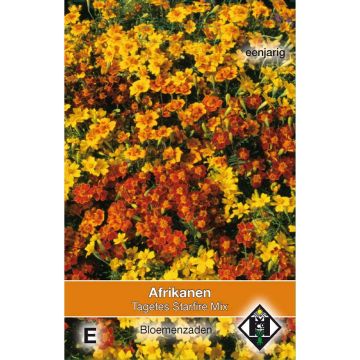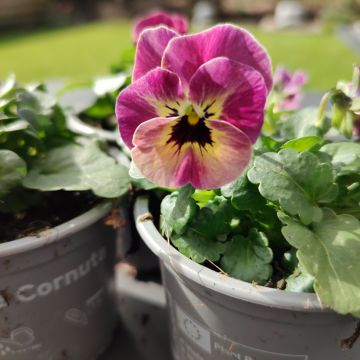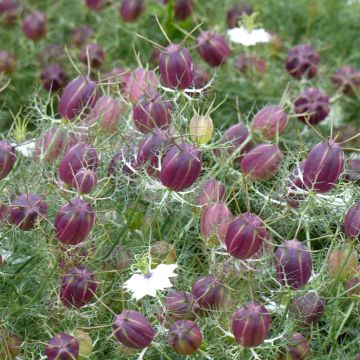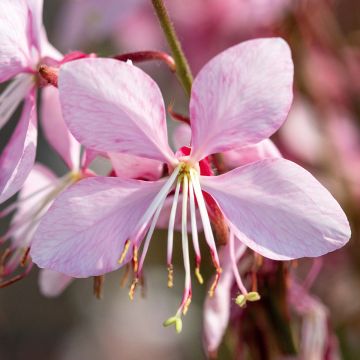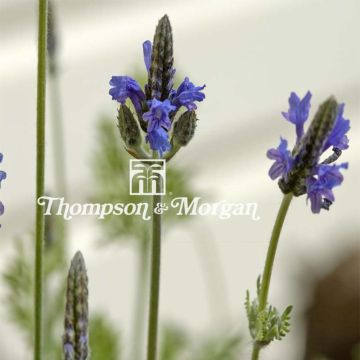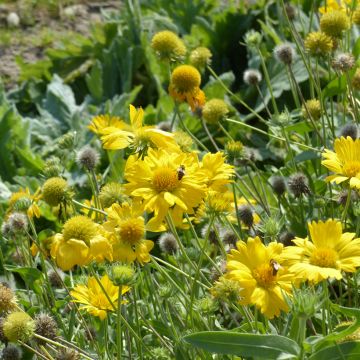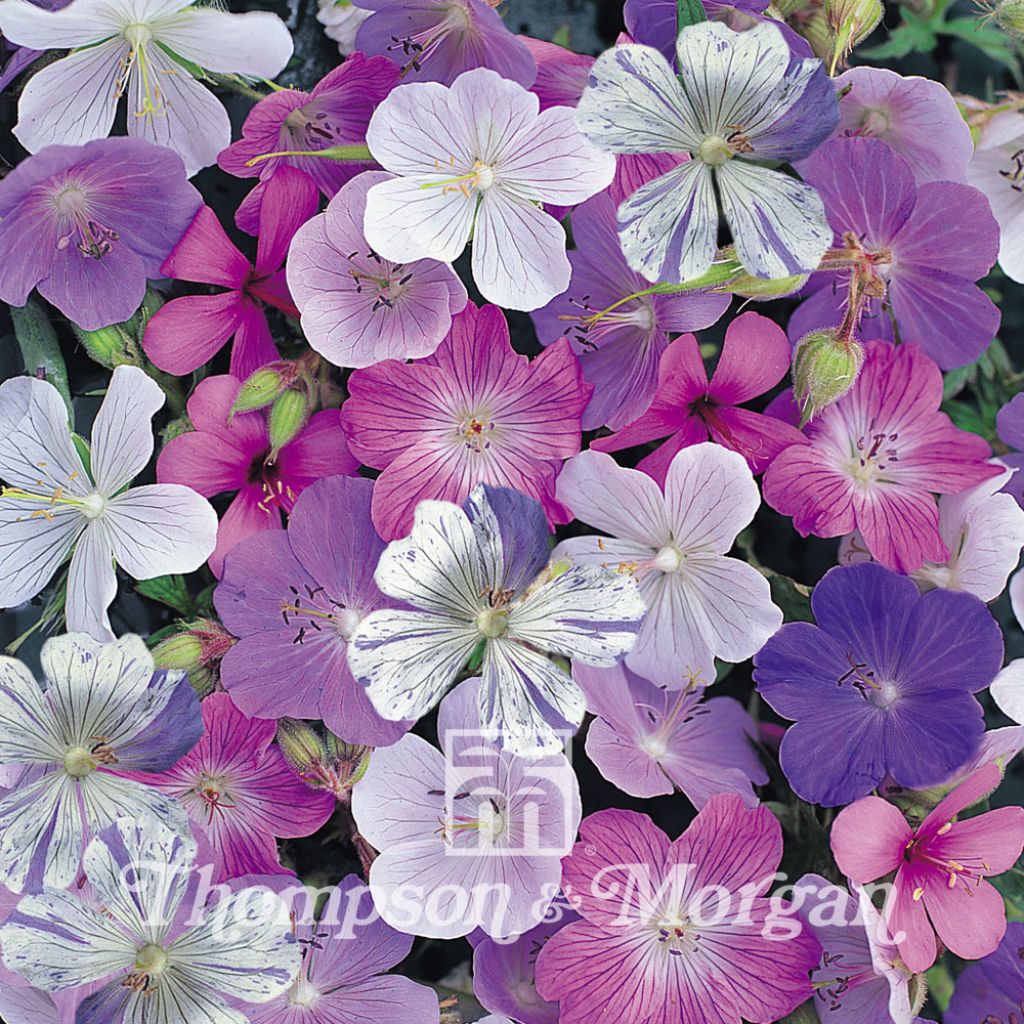

Geranium Reflections
Geranium pratense Reflections
Geranium x pratense Reflections
Meadow cranesbill, Meadow geranium
I think it's me who didn't do them well.
Nathalie G., 04/10/2017
This plant carries a 6 months recovery warranty
More information
We guarantee the quality of our plants for a full growing cycle, and will replace at our expense any plant that fails to recover under normal climatic and planting conditions.
Seed-only orders are dispatched by sealed envelope. The delivery charge for seed-only orders is €3.90.
Does this plant fit my garden?
Set up your Plantfit profile →
Description
This exclusive mix of perennial geraniums, called Geranium Reflections, allows you to obtain numerous different plants from sowing, at a low cost. They all offer large cup-shaped flowers in a range of carefully selected colours: blue, mauve, violet, pink, or white. The famous bicolour variety 'Splish-Splash' is also included. No garden is complete without these hardy and easy-to-grow plants. They thrive in moist and fertile soils.
The perennial geranium belongs to the Geraniaceae family. The Reflections selection is composed of highly varied horticultural cultivars, derived mainly from Geranium pratense, the meadow cranesbill. This robust species is found in wet meadows, along roadsides, and in mown meadows. The geraniums in this mix are herbaceous perennial plants with a bushy habit, reaching heights and widths of 30 to 60cm (12 to 24in), depending on the plants. They flower early in summer, in June-July, at the top of branched and hairy stems, and sometimes bloom again in September. The flowers, with a diameter of 30 to 35mm (1in), come in a wide range of colours, with the petals often finely veined in darker shades. Among them, you will recognise the white corollas splashed with blue-mauve of the 'Splish-Splash' variety. The flowering is nectar-rich and attractive to pollinators. The foliage is deciduous, composed of large polygonal, lobed and dentate leaves, which are medium green in colour, measuring 20cm (8in) long. They appear almost all the way along the robust and hairy stems. The foliage takes on a beautiful bronzed hue in autumn, depending on the plants.
Like many other species of perennial geraniums, Geranium pratense, its varieties and hybrids, thrive in a naturalistic garden and are superb plants, providing nectar and pollen for numerous insects such as butterflies, bees, bumblebees, etc. It is ideal for a cottage garden, in borders, along pathways, or on embankments. It will quickly add a splash of colour to simple perennial beds, where it will be a faithful companion to columbines, peonies, lupins, bellflowers, poppies, and other tall daisies.
Report an error about the product description
Flowering
Foliage
Plant habit
Botanical data
Geranium
x pratense
Reflections
Geraniaceae
Meadow cranesbill, Meadow geranium
Cultivar or hybrid
Other Thompson and Morgan seeds
Planting and care
Sow perennial geraniums from February to June or in September-October. Use pots or trays filled with moist compost. Cover the seeds with a thin layer of compost or vermiculite. Keep the seedlings at 15 to 20°C (59 to 68°F), protected in a mini-greenhouse or a transparent plastic bag. Germination usually takes about twenty days, but it can be slower. If your seeds have not germinated after 8 weeks, place the trays or pots in the refrigerator for 3 weeks to break dormancy, before returning them to 15 to 20°C (59 to 68°F).
The recommended method to successfully sow wood geranium is to replicate the germination conditions it experiences in nature as closely as possible.
As the young plants appear and when they are large enough to handle, transplant them into 7.5cm (3in) diameter pots or trays. Gradually acclimatise them to outdoor conditions for 10 to 15 days before planting them in their final position, spacing them 60cm (24in) apart.
In its natural habitat, Geranium pratense thrives in woods and slopes in areas with annual mowing. It prefers a sunny exposure and moist, rich, limey soil. In heavy soil, incorporate leaf compost into the garden soil in the planting hole. It tolerates partial shade, although it may be less floriferous. After flowering, it is advisable to cut back the stems and leaves to ground level to prevent excessive self-seeding and to encourage new foliage or even a second flowering in autumn.
Sowing period
Intended location
-
, onOrder confirmed
Reply from on Promesse de fleurs
Flower seeds
Haven't found what you were looking for?
Hardiness is the lowest winter temperature a plant can endure without suffering serious damage or even dying. However, hardiness is affected by location (a sheltered area, such as a patio), protection (winter cover) and soil type (hardiness is improved by well-drained soil).

Photo Sharing Terms & Conditions
In order to encourage gardeners to interact and share their experiences, Promesse de fleurs offers various media enabling content to be uploaded onto its Site - in particular via the ‘Photo sharing’ module.
The User agrees to refrain from:
- Posting any content that is illegal, prejudicial, insulting, racist, inciteful to hatred, revisionist, contrary to public decency, that infringes on privacy or on the privacy rights of third parties, in particular the publicity rights of persons and goods, intellectual property rights, or the right to privacy.
- Submitting content on behalf of a third party;
- Impersonate the identity of a third party and/or publish any personal information about a third party;
In general, the User undertakes to refrain from any unethical behaviour.
All Content (in particular text, comments, files, images, photos, videos, creative works, etc.), which may be subject to property or intellectual property rights, image or other private rights, shall remain the property of the User, subject to the limited rights granted by the terms of the licence granted by Promesse de fleurs as stated below. Users are at liberty to publish or not to publish such Content on the Site, notably via the ‘Photo Sharing’ facility, and accept that this Content shall be made public and freely accessible, notably on the Internet.
Users further acknowledge, undertake to have ,and guarantee that they hold all necessary rights and permissions to publish such material on the Site, in particular with regard to the legislation in force pertaining to any privacy, property, intellectual property, image, or contractual rights, or rights of any other nature. By publishing such Content on the Site, Users acknowledge accepting full liability as publishers of the Content within the meaning of the law, and grant Promesse de fleurs, free of charge, an inclusive, worldwide licence for the said Content for the entire duration of its publication, including all reproduction, representation, up/downloading, displaying, performing, transmission, and storage rights.
Users also grant permission for their name to be linked to the Content and accept that this link may not always be made available.
By engaging in posting material, Users consent to their Content becoming automatically accessible on the Internet, in particular on other sites and/or blogs and/or web pages of the Promesse de fleurs site, including in particular social pages and the Promesse de fleurs catalogue.
Users may secure the removal of entrusted content free of charge by issuing a simple request via our contact form.
The flowering period indicated on our website applies to countries and regions located in USDA zone 8 (France, the United Kingdom, Ireland, the Netherlands, etc.)
It will vary according to where you live:
- In zones 9 to 10 (Italy, Spain, Greece, etc.), flowering will occur about 2 to 4 weeks earlier.
- In zones 6 to 7 (Germany, Poland, Slovenia, and lower mountainous regions), flowering will be delayed by 2 to 3 weeks.
- In zone 5 (Central Europe, Scandinavia), blooming will be delayed by 3 to 5 weeks.
In temperate climates, pruning of spring-flowering shrubs (forsythia, spireas, etc.) should be done just after flowering.
Pruning of summer-flowering shrubs (Indian Lilac, Perovskia, etc.) can be done in winter or spring.
In cold regions as well as with frost-sensitive plants, avoid pruning too early when severe frosts may still occur.
The planting period indicated on our website applies to countries and regions located in USDA zone 8 (France, United Kingdom, Ireland, Netherlands).
It will vary according to where you live:
- In Mediterranean zones (Marseille, Madrid, Milan, etc.), autumn and winter are the best planting periods.
- In continental zones (Strasbourg, Munich, Vienna, etc.), delay planting by 2 to 3 weeks in spring and bring it forward by 2 to 4 weeks in autumn.
- In mountainous regions (the Alps, Pyrenees, Carpathians, etc.), it is best to plant in late spring (May-June) or late summer (August-September).
The harvesting period indicated on our website applies to countries and regions in USDA zone 8 (France, England, Ireland, the Netherlands).
In colder areas (Scandinavia, Poland, Austria...) fruit and vegetable harvests are likely to be delayed by 3-4 weeks.
In warmer areas (Italy, Spain, Greece, etc.), harvesting will probably take place earlier, depending on weather conditions.
The sowing periods indicated on our website apply to countries and regions within USDA Zone 8 (France, UK, Ireland, Netherlands).
In colder areas (Scandinavia, Poland, Austria...), delay any outdoor sowing by 3-4 weeks, or sow under glass.
In warmer climes (Italy, Spain, Greece, etc.), bring outdoor sowing forward by a few weeks.

































